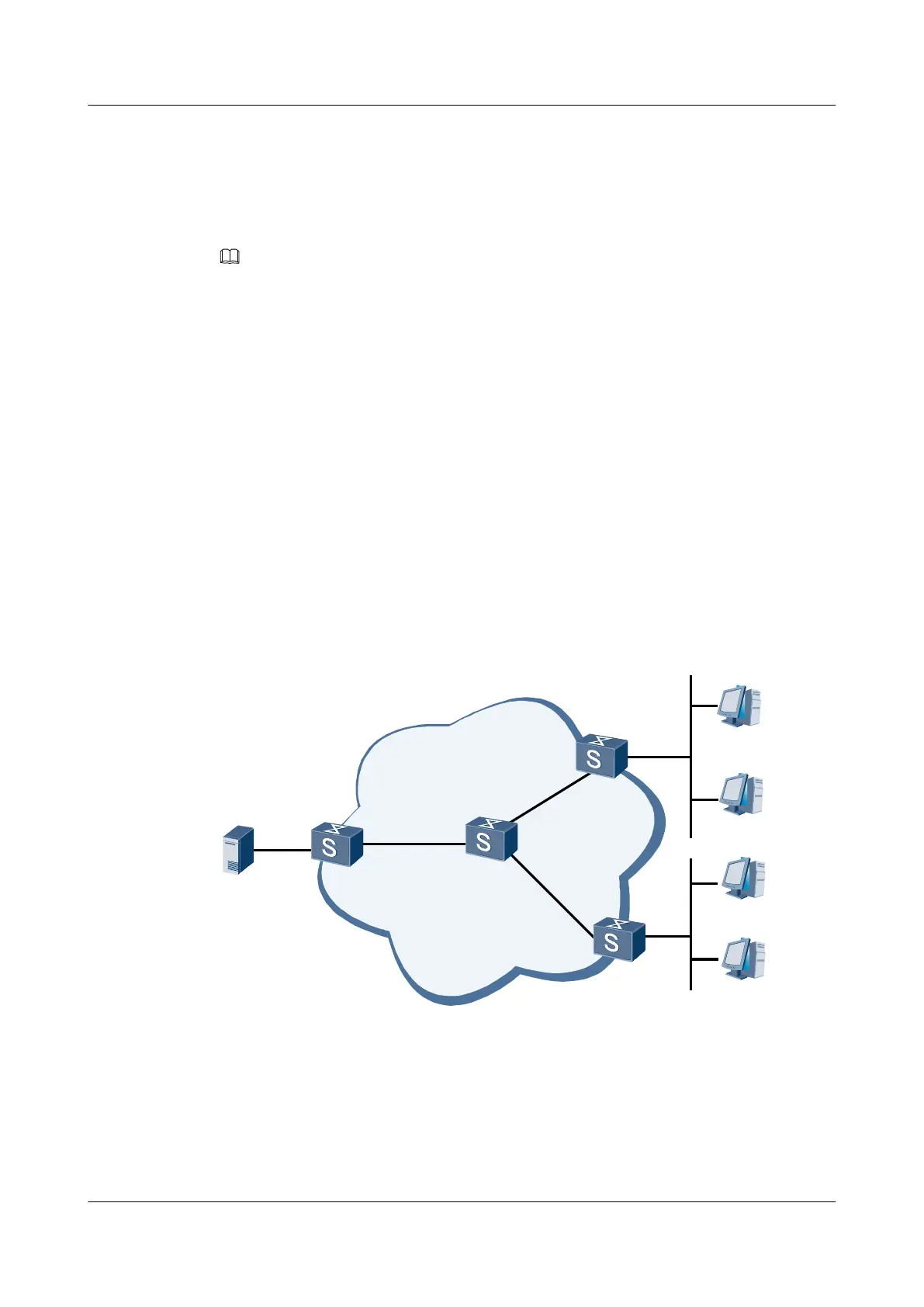3.1 Introduction to PIM-DM
This section describes the basic information about PIM-DM.
NOTE
The switch referred in the following contents is an S9300 supporting the Layer 3 multicast protocol and
multicast routing function.
The Protocol Independent Multicast (PIM) indicates that a static route or any unicast routing
protocol such as RIP, OSPF, IS-IS, or BGP can provide routing information for IP multicast.
Although the multicast routing entry is generated through the unicast routing table, the multicast
routing is independent of unicast routing protocols.
PIM forwards multicast packets through the Reverse Path Forwarding (RPF) mechanism. The
RPF mechanism uses the existing unicast routing information to create a multicast forwarding
tree. When a multicast packet reaches an S9300, the S9300 performs the RPF check. If the
multicast packet passes the RPF check, the S9300 creates the matching multicast routing entry
to forward the multicast packet. If the multicast packet fails to pass the RPF check, the S9300
discards the packet.
The Protocol Independent Multicast Dense Mode (PIM-DM) belongs to the multicast routing
protocol in dense mode, which is applicable to the densely-distributed network in a small scale.
Figure 3-1 shows the function and position of PIM-DM in a multicast network.
Figure 3-1 Application of PIM-DM in a multicast network
UserD
Source
Multicast
Receiver
UserB
Receiver
UserC
Receiver
UserA
IGMP
PIM-DM
PIM-DM
PIM-DM
IGMP
S9300
S9300
S9300
S9300
3.2 PIM-DM Features Supported by the S9300
This section describes PIM-DM features supported by the S9300.
Quidway S9300 Terabit Routing Switch
Configuration Guide - Multicast 3 PIM-DM Configuration
Issue 01 (2009-07-28) Huawei Proprietary and Confidential
Copyright © Huawei Technologies Co., Ltd.
3-3

